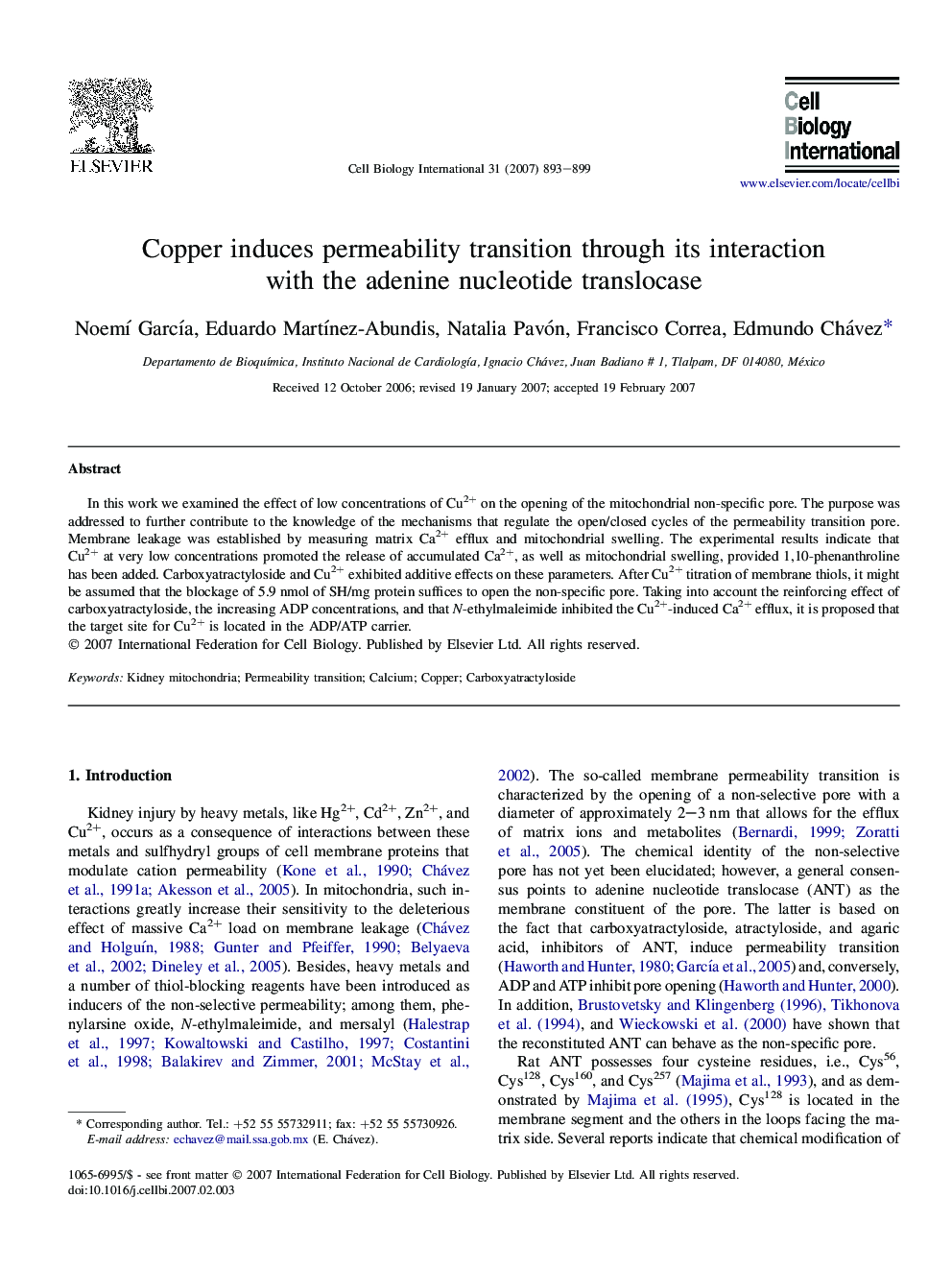| Article ID | Journal | Published Year | Pages | File Type |
|---|---|---|---|---|
| 2067686 | Cell Biology International | 2007 | 7 Pages |
Abstract
In this work we examined the effect of low concentrations of Cu2+ on the opening of the mitochondrial non-specific pore. The purpose was addressed to further contribute to the knowledge of the mechanisms that regulate the open/closed cycles of the permeability transition pore. Membrane leakage was established by measuring matrix Ca2+ efflux and mitochondrial swelling. The experimental results indicate that Cu2+ at very low concentrations promoted the release of accumulated Ca2+, as well as mitochondrial swelling, provided 1,10-phenanthroline has been added. Carboxyatractyloside and Cu2+ exhibited additive effects on these parameters. After Cu2+ titration of membrane thiols, it might be assumed that the blockage of 5.9Â nmol of SH/mg protein suffices to open the non-specific pore. Taking into account the reinforcing effect of carboxyatractyloside, the increasing ADP concentrations, and that N-ethylmaleimide inhibited the Cu2+-induced Ca2+ efflux, it is proposed that the target site for Cu2+ is located in the ADP/ATP carrier.
Related Topics
Life Sciences
Biochemistry, Genetics and Molecular Biology
Biophysics
Authors
Noemà GarcÃa, Eduardo MartÃnez-Abundis, Natalia Pavón, Francisco Correa, Edmundo Chávez,
